Survival caches come in various shapes and sizes. They are usually filled with essential supplies you would need easy access to after a disaster or SHTF situation.
One easy and inexpensive way to make a cache in your backyard is to bury a five-gallon bucket filled with supplies to use in an emergency.
Why Use Survival Caches?
There are a few reasons to use a survival cache. The main reason is to hide supplies from anyone wanting to steal them. Another reason to use a survival cache is to place resupply gear along a bug-out route at various points.
You can also use survival caches as a part of your emergency stockpiles when you run out of storage room inside your home.
What to Place in a Survival Cache
What you put inside the bucket of your survival cache largely depends on the requirements of your preparedness plans and your family’s needs. What one prepper puts in their cache may differ significantly from what another would place. Many factors will influence what you fill the bucket with, but there are a few things you should consider.
- MREs, freeze-dried meals, or other non-perishable foods
These foods are designed for long-term storage and quick consumption, making them ideal for survival caches. But instead of relying on overpriced MREs with questionable portions, consider crafting your own survival meals. Using this guide, you can prepare over 100 recipes designed for long-term storage without refrigeration. - Water filters
Clean drinking water is vital for survival. Water filters or purification tablets provide a lightweight alternative for extended use, especially when you’re on the move or unsure about water quality. - Ammunition and firearms
While firearms might not be feasible in all situations, storing ammunition in a secure cache ensures you’re prepared to defend yourself or hunt for food. - Silver, gold, or barter items
In a post-collapse economy, cash might lose value, making precious metals or barter items essential for trading. These assets can serve as currency when goods and services are scarce. - Medical supplies
Stocking your cache with bandages, antiseptics, and a wound care kit is essential, but don’t overlook natural remedies. This dual-extracted turkey tail tincture can be a game-changer for inflammation, chronic fatigue, and immune health. It’s an effective, shelf-stable solution for infections and other health challenges, that might prove vital when professional medical help is unavailable. - Maps, compasses, and other navigation gear
When GPS systems fail, old-fashioned navigation tools can guide you to safety. Topographical maps, a reliable compass, and even written directions ensure you can find your way even in unfamiliar terrain. - Emergency bug-out bags
Pre-packed bug-out bags in your caches ensure you have all the essentials if you need to evacuate in a hurry. - Survival kits
A comprehensive survival kit should include tools such as fire starters, multitools, duct tape, paracord, and other small essentials that can aid in building shelter, starting a fire, or performing repairs during an emergency. - Knives, axes, saws
These tools are indispensable for wilderness survival, allowing you to gather firewood, process food, or construct a shelter. Compact and durable versions of these tools fit easily into a cache. - Cooking gear
Lightweight cooking gear, such as small pots, stoves, or collapsible utensils, allows you to prepare meals efficiently. Look for items designed for camping, which are durable and pack easily into your cache.
⇒ How to Build the Oven That Cooks Without Fire, Fuel, Smell, or Smoke
What you put into the cache depends on what you intend to use it for. If you plan to place these along a bug-out route, you’ll be putting food, water, ammunition, and medical supplies to restock your bags.
If you plan on using these as part of your stockpile of emergency supplies, then each bucket would be devoted to a separate type of emergency supply. For example, you could have one with MREs, another with tools and equipment, and another with water and filtration supplies.
You can also use these caches to hold emergency bug-out bags, which you would go to if you had to evacuate your home so quickly you couldn’t grab your bug-out gear on the way out.
The Problem With Using a Five-Gallon Bucket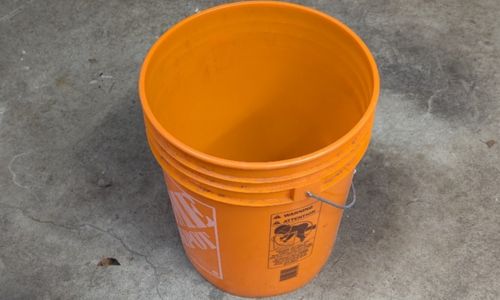
The five-gallon buckets with lids you get at the local hardware store are fantastic for storing preps, but they have a major drawback that must be considered. These buckets were never designed to be buried.
Taking a plastic five-gallon bucket and placing it underground introduces elements it was not designed for.
Related: 10 Myths About Storing Food in 5-Gallon Buckets
You can still use these buckets for a survival cache, but you will have to check on it regularly to ensure it is not leaking.
The most crucial factor to consider is to adequately protect and seal everything you place inside.
Prepping the Contents
What you place in the bucket cache will depend on many factors unique to you and your situation. That being said, there are a few universal things to think about.
Anything made of metal must be coated in grease and wrapped tightly in plastic to prevent corrosion. Metals that corrode at slower rates, such as aluminum, titanium and stainless steel, do not require the same level of protection, but you should at least give them a light oil coating.
Coat knifes in grease and wrap with plaistc but do not place it back into the sheath. The same goes for axes and other tools.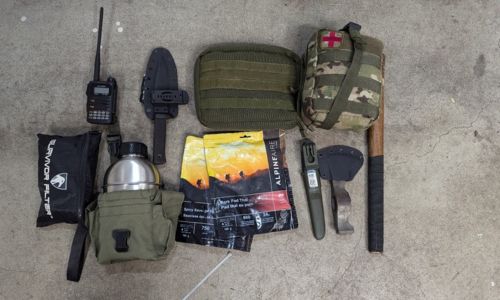
You must include a degreaser, rags, and oil in the cache to remove the grease from the metal items and clean and re-oil them. If you place a firearm in the bucket, include a complete cleaning kit.
In terms of water, I do not recommend storing water inside a cache. Regardless of what container you store it in, some issues may arise. The first is freezing. When water freezes, it expands and ruptures the container in which it’s stored. The second is that chemicals will leach into the water if you store water in plastic bottles. Lastly, even if you sanitize the container, there may still be bacteria or mould spores inside, which will multiply in the bottle.
Food should be protected from moisture and oxygen. I like using oxygen absorbers and vacuum sealing any food I place into a cache.
How to Build a Survival Cache From a Five-Gallon Bucket
To create a survival cache from a five-gallon bucket, start by lining the bucket with a thick contractor-grade garbage bag. Then, fill the bucket with the items you store inside the cache.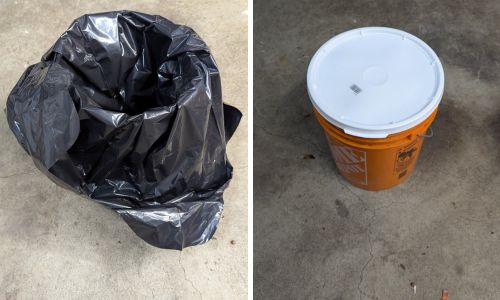
Secure the lid and dig a hole deep enough that the bucket lid is a couple of inches below the surface.
How to Make Sure You Can Find the Cache After it Is Buried
Once you bury the bucket and cover it in soil, grass, rocks, or leaves, you’ll need a way to find the cache in the future. You also need to ensure that the way you locate it is appropriate for an off-grid environment.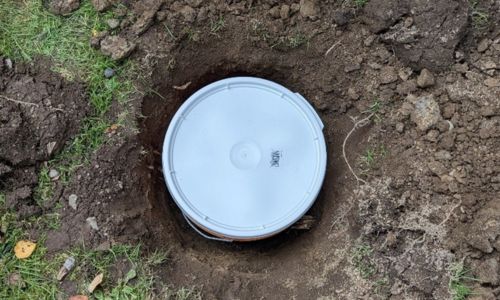
You can place the cache adjacent to a permanent object or landmark that will not be removed or relocated. The problem with this is that a landmark that is obvious enough to be used to mark a cache may attract attention.
Another method is to place the cache a distance away from the landmark. I like to put the cache at a fixed distance and direction from the landmark.
For example, 10 meters at a bearing of 123 degrees. Using the same distance and compass bearing for every cache, you don’t need to record that information anywhere. You only need to know where the landmarks are.
Even though a five-gallon bucket is not the most ideal vessel for a survival cache, as long as you check on the condition of the cache regularly, protect everything inside from moisture, and conceal it appropriately, burying a five-gallon bucket in your backyard can be a great way to store additional emergency supplies.
You may also like:
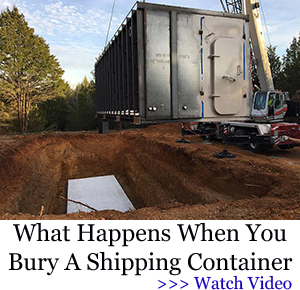 Why a Civil War Is Now More Probable Than Ever
Why a Civil War Is Now More Probable Than Ever
How to Hide Your Stockpile in Plain Sight (Video)
The FEMA Death Camps: Where Will They Take You?
9 Hiding Spots In Your House Where Looters Always Look First

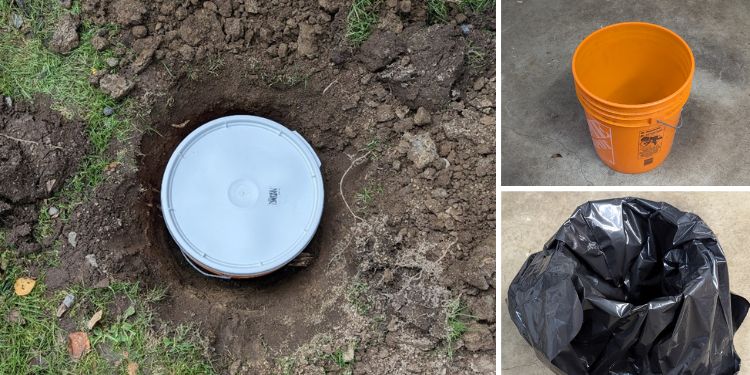













“For example, 10 meters at a bearing of 123 degrees. Using the same distance and compass bearing for every cache, you don’t need to record that information anywhere. You only need to know where the landmarks are.”
Clever!
Assuming we don’t have a pole flip or split….
Avoid any food that has a moisture content if you live anywhere that experiences freezing temperatures; stick with freeze dried. Cut to length vacuum sealer bags are useful for long items. As you fill the hole and get near surface level, drop a few cents in coins, it may just throw off searchers with metal detectors.
You can also use larger PVC pipe, which is designed to be buried. Just make sure you have a way to get everything out once you bury it.
The problem with burying anything where I live is that the ground freezes and there is no way I’d get it out of the ground until spring thaw.
The problem with MREs and water purification tablets is their limited shelf time. Also, if you have to dig it up every year to check on it, it defeats having a hidden cache for emergencies.
Double up the buckets for better rigidity and use a ‘Gamma Seal’ lid to seal it water tight. I would also individually place items within the bucket with freezer strength zipper bags.
seal ammo in a vacuum sealed bag. Place that bag in another vacuum sealed bag but NO vacuum on that one.
Place it in a plastic trash bag tied tightly.
Place in bucket.
Lubricate the bucket lid seal with silicone grease and attach.
Place bucket in another plastic bag and seal.
Bury it so the top is no closer than 1 foot below grade.
Plant some kind of plant on top (perennial) so you know where to look. Hiding in plain sight.
You have to dig and bury out of the public eye too.
You only need to look for that odd plant you planted to know where your stuff is.
Unlikely that someone will use a metal detector over your entire yard. Most likely they will look for key places. If necessary, get a bucket of old nuts and bolts and fling them around your yard (just watch out for mowing issues). But not too many to make them think it was intentional.
You could plant a bucket with junk (Kimshee?) in it somewhere that they can easily find to throw them off. A decoy of sorts.
Or even put something of low value in the bucket for them to find. Something you can explain away and not hurt you if they take it. Some kind of foodstuffs or even small survival tools (spares).
Many metal detectors can go down DEEPLY. Plumbers use those to locate water and sewer and gas lines deep in the soil.
Doubtful the authorities will use ground penetrating radar unless they suspect you have a tunnel….
All great ideas, but digging more than a couple inches in Phoenix Arizona, you are digging in a really hard clay, and lots of sizeable rocks. I attempted by hand more than a couple years ago, to put an above ground pool, half way in the ground. (in part to keep the lower part in colder soil, to keep the water cooler in hellish heat. Over the course of about 20 back breaking hours using a pick and shovel, I had a hole, about 10″ deep, by 2′ across. And I had a sizable rock in the middle, that appeared as large as a VW bug.
The value of ammunition will outweigh any value that gold might have, IMO.
Even then, who wants to trade away something that could be fired back at you?
For that reason, I would trade with trusted individuals only – and then, with backup.